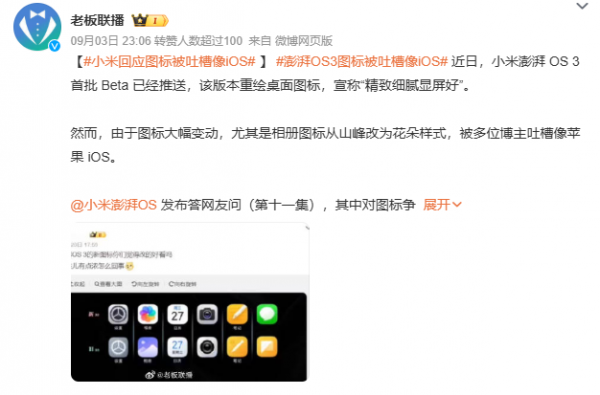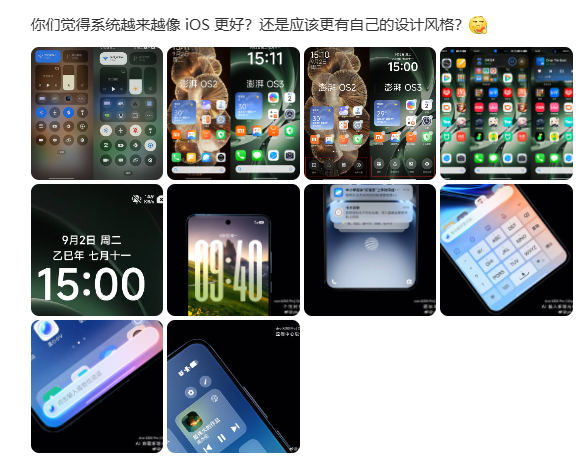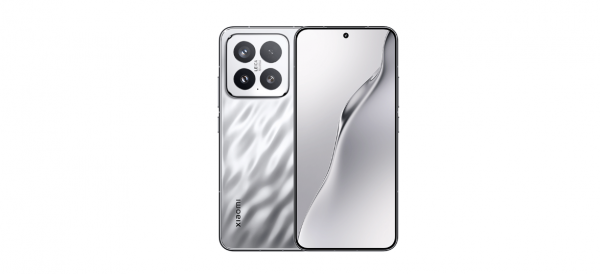Xiaomi's Mi Turbo OS 3 Faces Initial Backlash Over Resemblance to iOS 26
![]() 09/04 2025
09/04 2025
![]() 621
621
Most domestic mobile operating systems, despite their Android roots, have undergone extensive customization and optimization to cater to local user needs. In theory, each should possess its own unique characteristics. Indeed, early versions of these customized systems were meticulously designed with distinct features. However, over time, they appear to be converging with Apple's iOS. While iOS has also borrowed elements from Android, the reverse trend is more pronounced. Users of various brands express frustration over the increasing "Apple flavor".
Take Xiaomi's recently released Mi Turbo OS 3 as an example. After using the beta version for a few days, initial feedback has emerged. Many Xiaomi fans are struck by its similarity to iOS 26, leading to complaints trending on social media. While this attention is somewhat awkward, users cannot help but voice their concerns, prompting an official response from Xiaomi.

The Mi Turbo OS team stated that users can switch back to the classic icon design in system settings if they prefer. While not directly mentioning iOS 26, the underlying message is clear: if users find Mi Turbo OS 3's design too iOS-like and lacking personality, they can revert to the old version. To support their argument, some users have showcased the system design and desktop style of Mi Turbo OS 3, providing a clear understanding of the changes.
Personally, the album UI stands out the most. The official team has replaced the previous peak design with a petal pattern, which closely resembles the album style in iOS. Additionally, the "liquid glass" style has been implemented, though it still lags behind iOS 26 in terms of actual effects, hinting at a need for optimized real-time rendering capabilities. Personally, I believe domestic systems should not overly focus on this aspect as suboptimal optimization can backfire.

The control center's layout and style also exhibit a clear "Apple flavor," both in overall appearance and in detailed elements like the battery icon and notification stacking. Comparisons provided by users further illustrate this. However, many wonder why Xiaomi, despite being one of the latest to adopt this design, has received the most backlash. With other domestic manufacturers also模仿iOS 26, Xiaomi's high-profile benchmarking of Apple may have made it a specific target. This situation seems unfair to Xiaomi, as most complaints are not malicious but rather a reflection of Xiaomi's high visibility in China.

To quote a leading figure in the automotive industry, "good design always has a mutual understanding." As long as user experience remains paramount, drawing inspiration from others is not inherently wrong.







